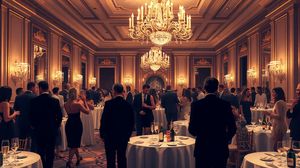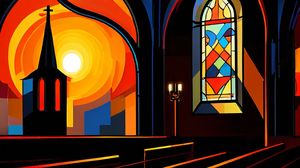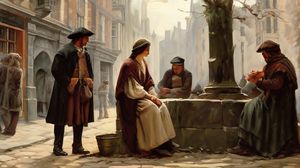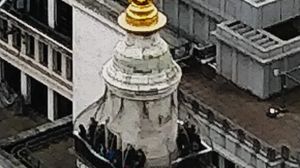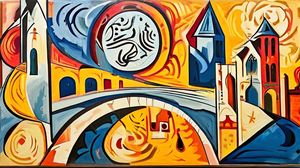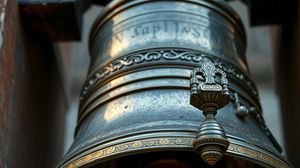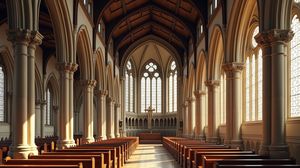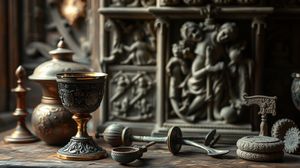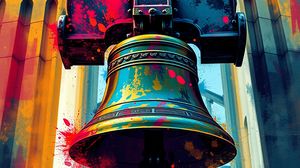
St. Mary Woolnoth is a remarkable piece of London's ecclesiastical heritage, nestled in the heart of the bustling City of London. The church is widely regarded for its distinctive architectural style, designed by the renowned architect Nicholas Hawksmoor. Completed in 1727, it stands as a testament to the creative genius of Hawksmoor, showcasing his unique synthesis of Baroque and classical influences.
One of the most intriguing aspects of St. Mary Woolnoth is its unusual façade. The twin towers that flank the entrance are capped with obelisks, giving the church a rather dramatic and fortress-like appearance, which stands out amidst the more typical structures in its vicinity.
The interior of the church is just as fascinating, with a square layout and a spacious nave that has remained mostly unchanged over the centuries. Its simple yet dignified design reflects Hawksmoor's masterful use of space and light, creating an atmosphere of serene tranquility within the busy city environment.
St. Mary Woolnoth also has a deep historical significance, not least because it was a focal point for influential figures of its time. John Newton, the famous abolitionist and hymn writer, served as rector here from 1780 to 1807. His time at the church has left an indelible mark on its history, contributing to its reputation as a place of humanitarian and spiritual significance.
An interesting quirk of this historic church is its integration into London's underground transit system. St. Mary Woolnoth served as a catalyst for creative engineering solutions when the Bank-Monument station was expanded in the 20th century. Ingeniously, the crypt was reinforced and used to accommodate a lift shaft and ventilation, making it a unique example of architectural adaptation.
St. Mary Woolnoth has also found notoriety through literature and pop culture. It features in T.S. Eliot's renowned poem "The Waste Land," where it is used as a symbol of continuity amidst modernity's turbulence, highlighting the church's enduring presence in an ever-changing city landscape.

Making the Most of Your Visit:
Start your visit by taking a moment to observe the unique façade of St. Mary Woolnoth. The twin towers with obelisks are quite unlike any other church in London and make for a great photo opportunity. Don't rush this; it's a perfect spot to appreciate Hawksmoor's ingenuity.
Once inside, be sure to look up at the ceiling and take in the way Hawksmoor designed the space with both simplicity and grandeur. The light that streams in through the windows is cleverly utilized to enhance the serene atmosphere, something you'll definitely want to experience firsthand.
If you're interested in the literary connection, bring along a copy of T.S. Eliot's "The Waste Land" and read the section that mentions the church while you're there. Standing in the space that inspired lines in such a famous poem can add a delightful layer to your visit.
Make sure to visit the small area dedicated to John Newton. Learning about his time at St. Mary Woolnoth and reflecting on his contributions to the abolitionist movement and hymn writing gives your visit a deeper historical and humanitarian context.
For those fascinated by London's underground history, spend a few moments contemplating how the church's crypt integrates into the Bank Station. Consider the brilliant engineering solution that let this historic building adapt to modern infrastructure, marking an interesting chapter in the city's development.

Visiting Times & Costs:
St. Mary Woolnoth is open to the public, typically during weekdays, though specific hours may vary, so it is advisable to check locally before visiting. The church is often accessible for personal prayer and quiet reflection.
Entry to the church is free, and there are no charges for visiting the main areas. However, donations are appreciated to help maintain the church and its operations.
Regarding accessibility, St. Mary Woolnoth may present some challenges for visitors with mobility issues due to the building's historic nature. It is recommended to confirm in advance about any available facilities or assistance that can be provided. The entrance is street level, offering relatively easier access than some other historic buildings in the area.

Address & Map:

Nearby:





